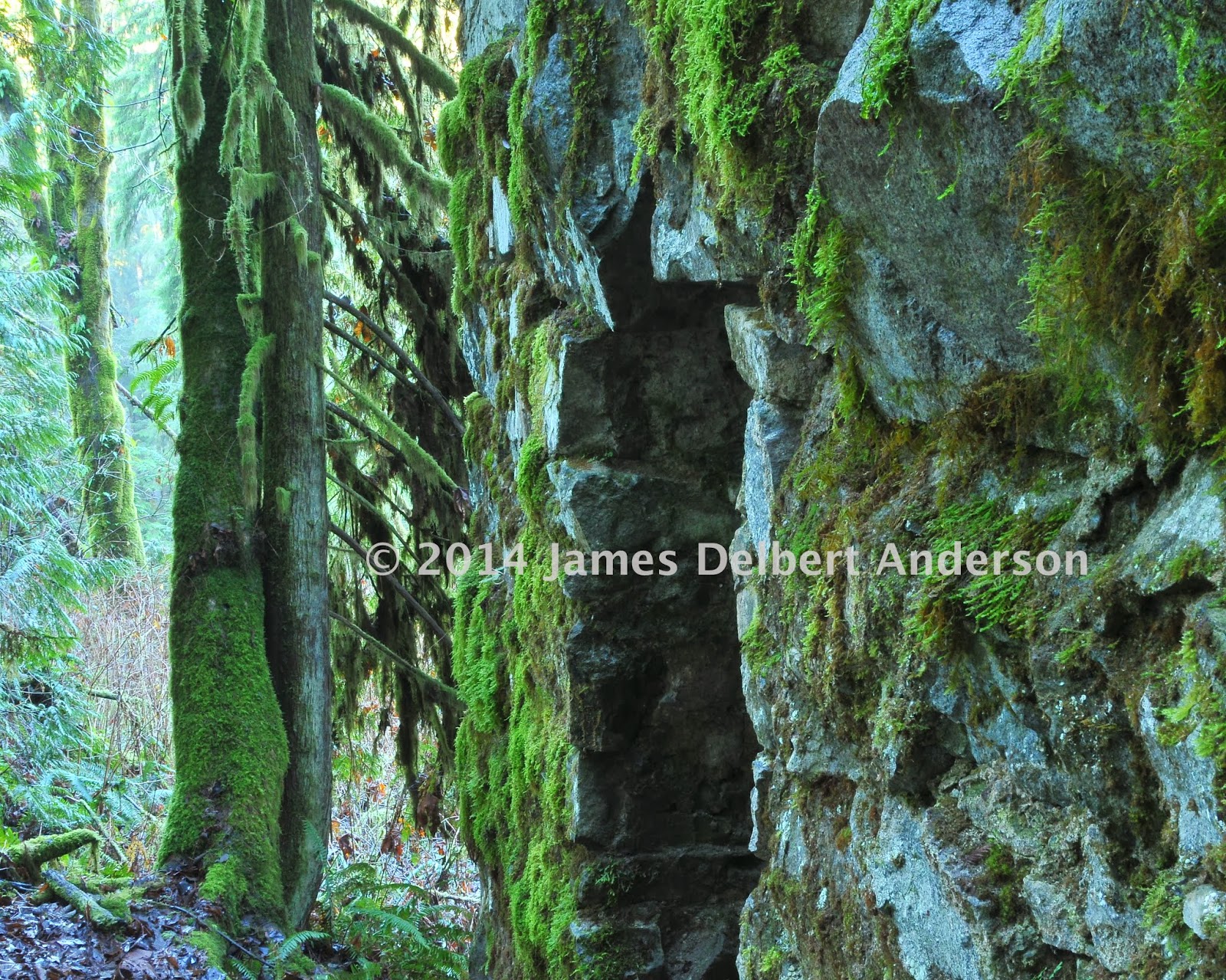Faithful followers of this blog will note that I usually post pictures of exclusively natural subjects. This post is unique, then, in that I am posting some photographs that show evidence of a couple of natural areas' human past. All but one of the images in this post, which is separately noted, come from the Lime Kiln Trail in Robe Canyon Historical Park.
The first two feature the Lime Kiln itself, which, according to this website, was used to fire limestone (quarried nearby) into lime, which was used in mortar and plaster for the construction of the adjacent Everett & Monte Cristo Railroad. With the first image, I wanted to definitively place the kiln in its natural setting and framed it between two mossy trees. I used a wide aperture of f/5.6 to blur the trees as much as I could and direct attention to the kiln. The second uses a wider angle and a wide depth of field (aperture of f/22) for a different approach.
This…is a thing. From the looks of it, I'd like to say it's a saw blade, but I really couldn't say definitively. I was intrigued by how it was broken and the way moss was growing on it.
The next set of two images comes from Meadowdale Beach Park in Edmonds. As I understand it, the notches in these stumps held boards that loggers would use to stand on while they cut the trees; that way, they wouldn't have to cut it at the much thicker base.
This last image looks down a slope to the aforementioned river. I used an aperture of f/29 because I wanted to get the licorice ferns in the foreground as well as the background trees in focus. The trickiest aspect of this image was the lighting; the contrast between the shadowy foreground trunk and the bright background (particularly the river) was high. I tried using a flash but at a shutter speed of 4 seconds, it wasn't making much difference (I would have needed a floodlight!). Still, the end result wasn't too bad.







No comments:
Post a Comment